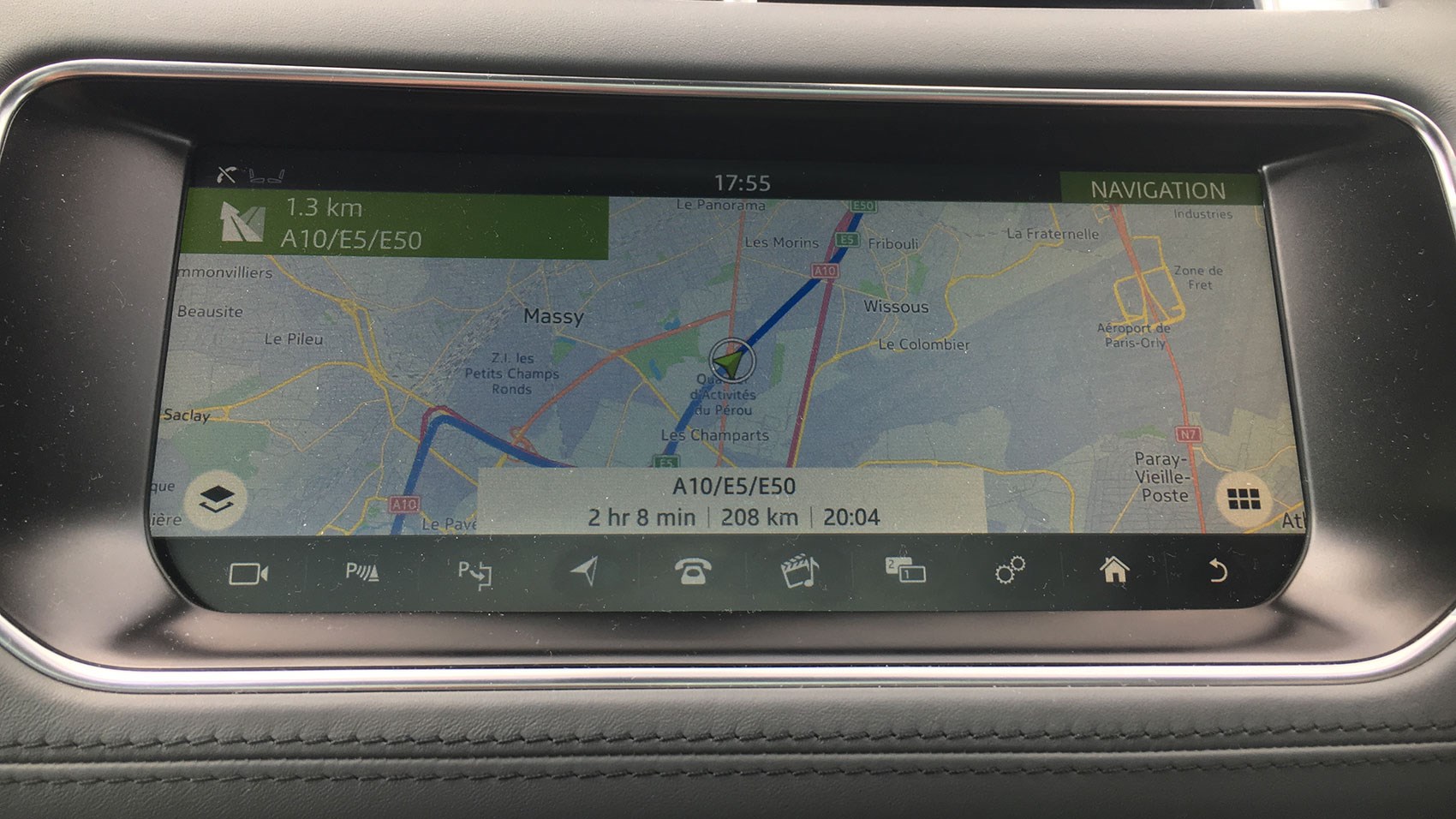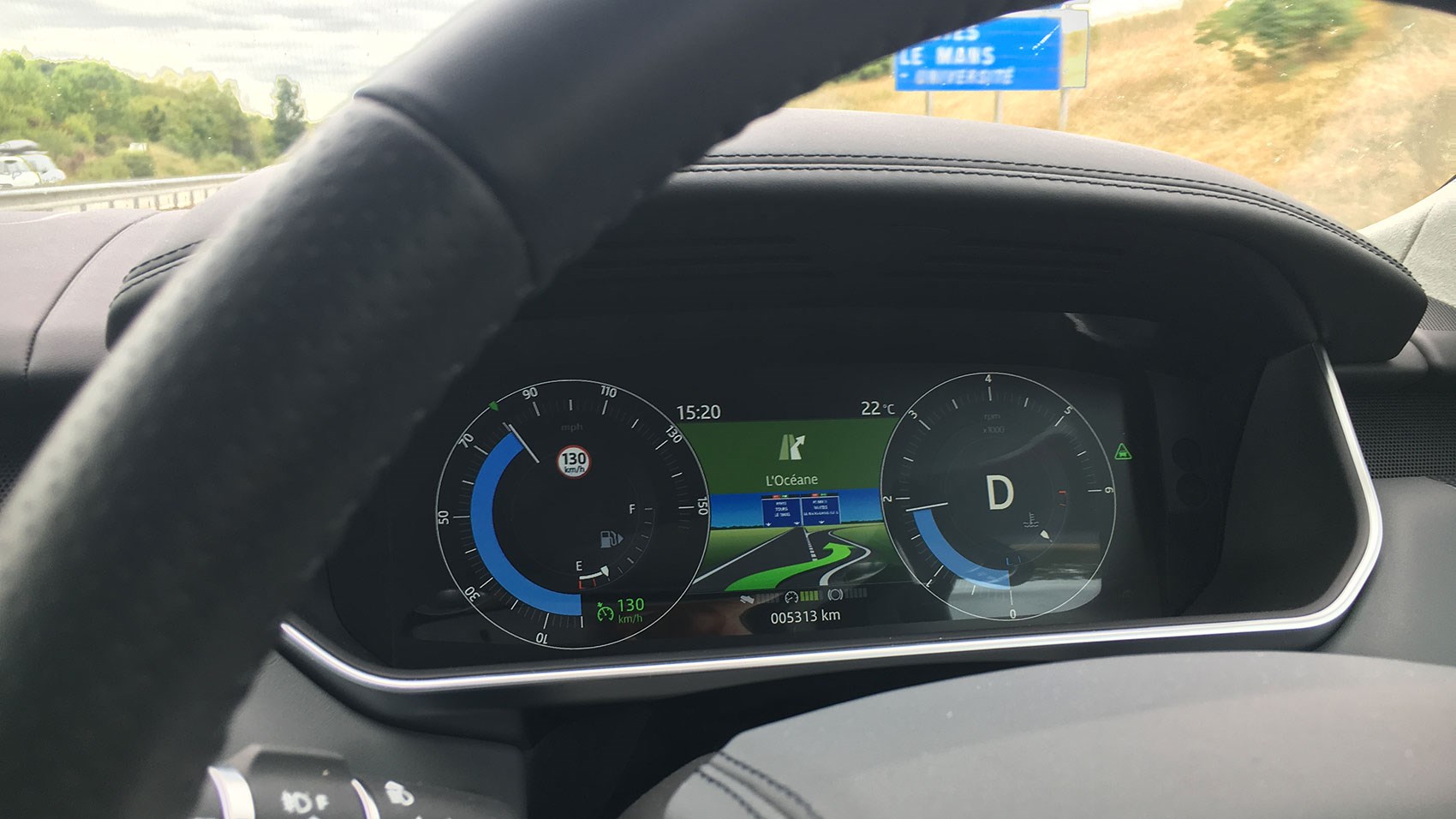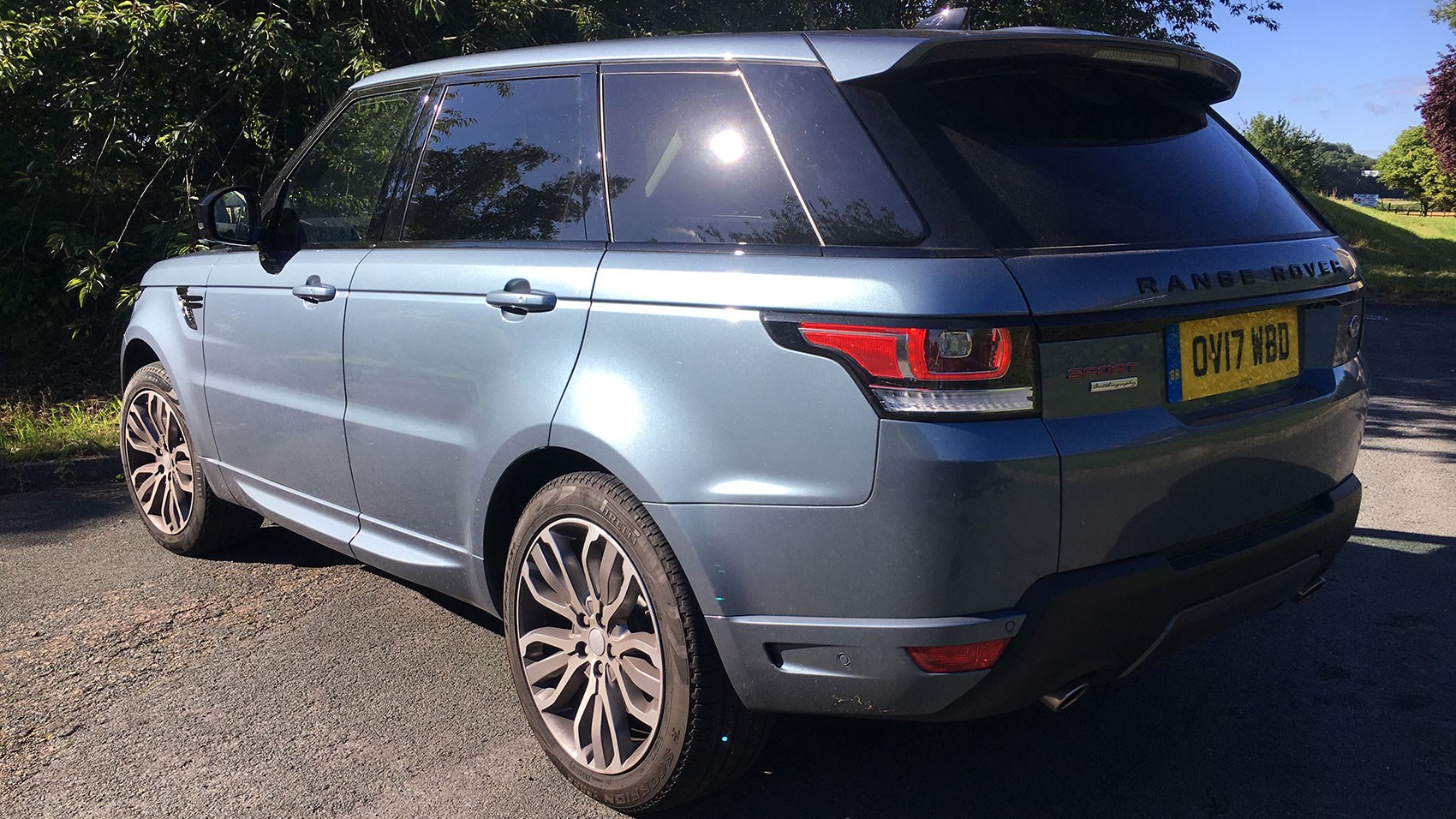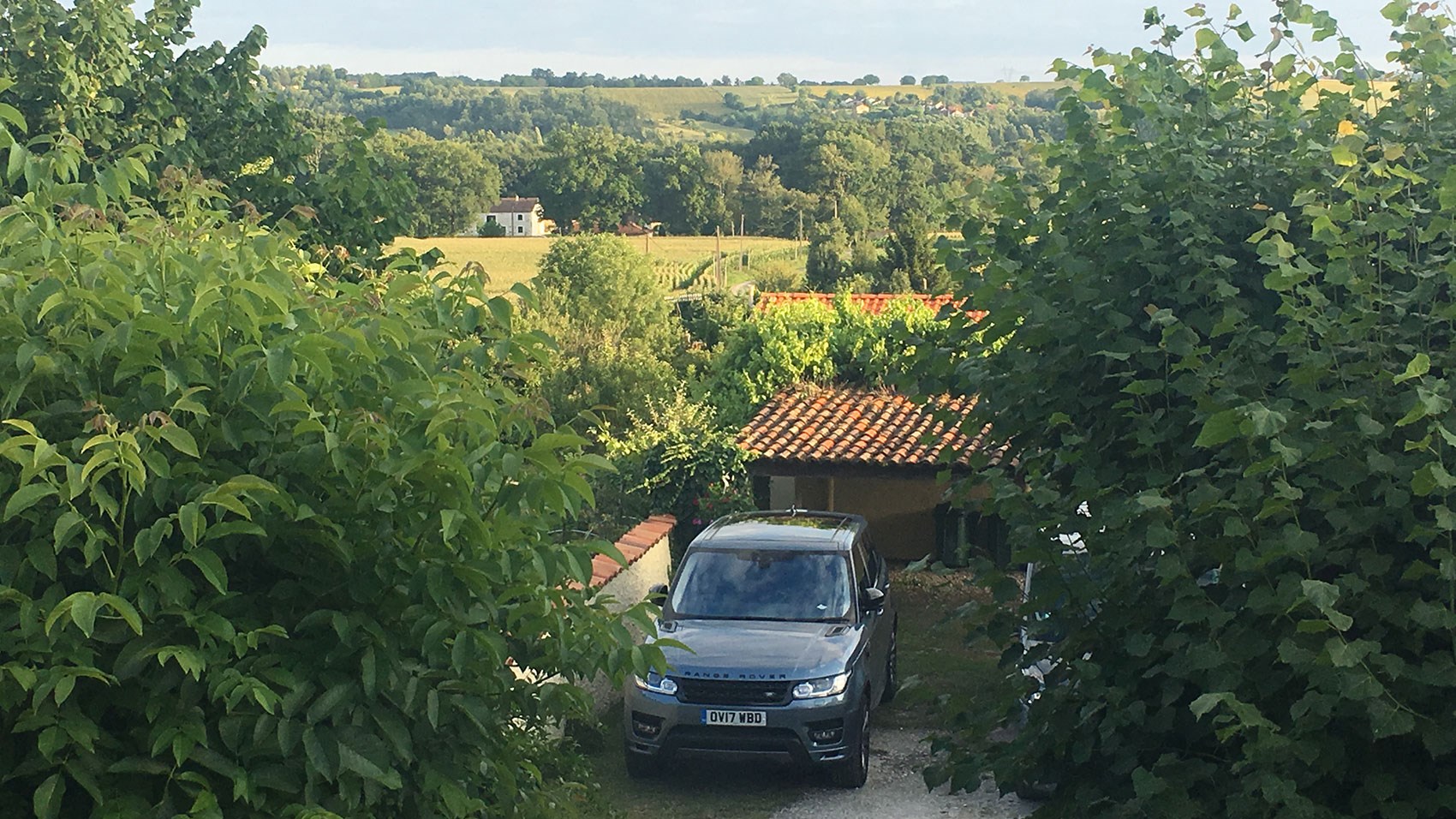► Range Rover Sport Model Year 2017
► New touchscreen, engines and safety kit
► On sale now priced from £59,700
Everyone knows Range Rovers are over-engineered: this V6 diesel-powered Sport can slosh through water beyond the height of my kitchen table, and haul itself up rocky mountainsides. But what about a proper workout, getting two mutinous under-fives and a week’s worth of improperly edited baggage to the Dordogne, in peace and harmony?
Sounds like a job for this 2017 model year Sport, now upgraded with a 10-inch touchscreen, important safety features such as automated emergency braking, blind spot warning and lane keep assist, plus a choice of two new engines: the Sport’s first four-cylinder diesel and a supercharged V6 petrol.

While the fourpot kicks off the range at a sliver under £60,000, this is the popular V6 diesel, which costs £80,300 in flagship Autobiography Dynamic trim. That’s a lot of money but justified by that innate sense of luxury and well-being in big Range Rovers. How so?
Despite being a monolithic brick punching through the air, the cabin sounds hermetically sealed from wind and road noise; the only sound on a 130kmh French cruise is the hum of a diesel turning at 1850rpm. The creamy ride, on four corner air suspension, has the oleaginousness of a politician canvassing your vote. The few cabin surfaces that aren’t wrapped in sumptuous leather are trimmed in intricate woven metal or neat silver plastic. And the seats are like an overweight pilates teacher: plump but flexible.
Throw in its imperious size – the crow’s nest driving position has me mistaking a Skoda Kodiaq SUV for a Superb estate – and you have a vehicle as stately as a superyacht.
Old school Range Rover then. Tell me about the new gadgets.
The 10-inch touchscreen has a letterbox format which feels more suitable for movie premieres than navigation: its narrow size is unusual and makes it hard to get my favoured trade-off between legibility and the surrounding location detail. Thankfully you can address this with a fast, smooth pinch and zoom function on the classy map, that lets you look ahead with a quick drag of the finger. There are no longer any hard keys but 10 logical icons across the bottom of the screen to access functions. JLR has been a resolute advocate of the touchscreen, and it’s telling that Audi is following suit, with its new A8 abandoning the rotary controller.

JLR’s digital instrument binnacle has come on a bit since being introduced on the 2009 XJ. The Rangie has clearly rendered speed and tacho dials: the latter has nice animations of blue revs and a spearing redline if you barrel up to the limit. Sat-nav instructions appear between the dials at key directional moments, which is preferable to the binnacle’s barren fullscreen map display.
Audi’s virtual cockpit is better, relaying more features with a more colourful, sophisticated interface, but the 2017MY’s binnacle is JLR’s best yet. It certainly packs sufficient info to make the Head-Up Display a waste of £1035.

What look to be chunky 10-inch iPads are integrated into the front seat shoulders: this is the £2590 rear seat entertainment pack, with wireless headphones. You can play DVDs, content from memory sticks or portable electronics that can be hooked up by HDMI, and for an extra £625, the front touchscreen becomes dual-view for the passenger to watch movies too.
The user experience certainly doesn’t subscribe to Domino’s pizza one-click ordering philosophy: to start a DVD, I had to jump in and out of menus for three different screens, plus select the soundtrack channel, then navigate the DVD’s own menu to avoid hearing Toy Story 2 in Danish. At first, it’s more fiddly than a bluegrass festival.
The upside is there’s lots of individual flexibility over who watches and listens to what, and it kept the children transfixed for hours on end. It has also given me an unusual skill: I now know every word to the movie ‘Trolls’, without having seen the accompanying visuals.
Enough on the infotainment: how’s it drive?
The 3.0-litre turbodiesel kicks out 516lb ft of torque nice and low down, with the responsive surge making the bonnet rise like a speedboat’s prow gliding over a wave. But the SDV6 weighs 2184kg, which can blunt acceleration on inclines: the official 0-62mph time is 7.2secs. Quick enough: the V6 remains the sweet spot in the engine line-up.
It’s mated to ZF’s eight-speed automatic transmission, which can be overriden with plastic-feeling paddles. The Sport had a habit of changing up from second or third a split second before me, but commendably the electronics ignore the second command to avoid leaving you flailing in too high a gear. It would be preferable to let the driver have full control though. The drivetrain, with its occasional clonks of diffs and cog swaps, feels pleasingly mechanical, and this being an over-engineered Range Rover, it has low range gears for off-roading. Another 2017MY development is low traction launch, which manages the torque flow on tricky surfaces to help get you moving.
The Sport’s body control is almost as impressive as the serene ride comfort. There’s some initial roll as you enter a corner, but the body settles quickly and the chassis relays its strong grip. The steering is sweetly judged, giving a feeling of responsiveness but calm stability. The final 50km to the holiday home twisted and climbed through deserted rural roads, and the Range Sport swept along them like a well-conditioned heavyweight boxer, on its toes and surprisingly agile.

Over the week and 1363 miles, fuel economy averaged 28.4mpg. The £1035 massage seats were a pleasing distraction up front, but the plumpness of the rear leather prevented the use of Isofix to attach one child seat: Land Rover please fit an access hatch to reach the bars. It will be telling to see how the packaging evolves with the next-generation Range Sport: the middle row could be more spacious, and the boot is surprisingly shallow – its 489 litres is less than a Seat Ateca’s 510. Thankfully £780 privacy glass renders all the overflow on the parcel shelf nigh-on invisible to prying eyes.

Verdict
The 2017MY update has kept the Range Rover Sport on the pace of newer rivals such as the Audi Q7 and Volvo XC90. It’s not as light, frugal or tax-friendly as those peers, but it offers a compelling combination of comfort and dynamics. If you’re a sucker for that Range Rover image and its go-anywhere potential, the Sport still has what it takes.
